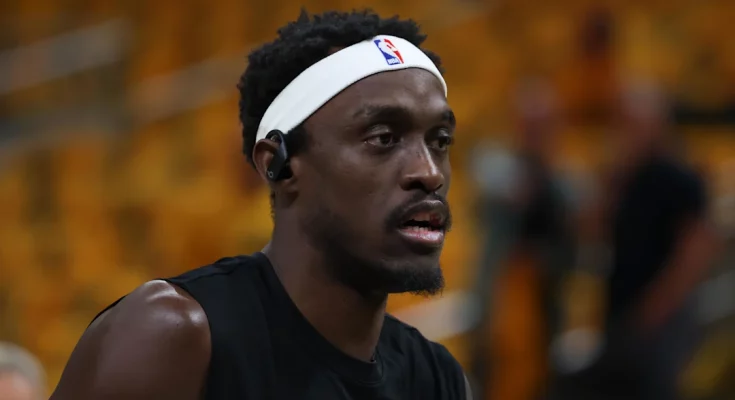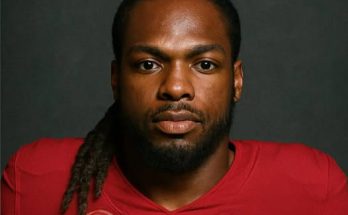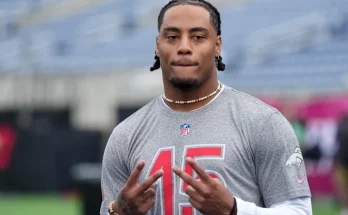With the unexpected absence of Tyrese Haliburton, the Indiana Pacers find themselves at a critical juncture in their season. The rising All-Star guard, who has been the offensive engine and emotional leader of the franchise, is out indefinitely with an injury that could significantly alter the Pacers’ playoff aspirations. In light of this, Indiana must pivot—urgently and decisively. The solution isn’t an abstract one. It wears number 43 and goes by the name Pascal Siakam. Acquired in a high-profile midseason trade to elevate the Pacers’ postseason potential, Siakam now finds himself not just as a key piece—but as the cornerstone Indiana must build around in Haliburton’s absence.
Siakam, a former NBA champion and two-time All-Star, is no stranger to high-stakes basketball. His journey from a late-blooming prospect to a featured player on a championship roster in Toronto is well-documented, but Indiana is asking something slightly different of him now. They’re not simply asking for stability. They’re asking for leadership, consistency, and star-level production every single night. Without Haliburton’s ball-handling wizardry and playmaking gravity, opposing defenses will be laser-focused on disrupting Indiana’s flow. That means Siakam must evolve from a complementary star into an outright alpha—especially in crunch time.
The good news for Indiana is that Siakam’s skill set is expansive. He’s not just a scorer—he’s a fluid, versatile forward who can handle the ball, facilitate for teammates, run in transition, and defend multiple positions. His ability to initiate offense from the top of the key or operate out of the post gives the Pacers a rare kind of offensive flexibility. Without Haliburton, they’ll need to lean on these strengths heavily. We should expect to see Siakam used more as a point-forward, orchestrating pick-and-rolls with Myles Turner or slashing to the rim off dribble handoffs. The Pacers can no longer afford to have him be a cog; he must be the hub.
What makes this situation more complex is the lack of a true secondary ball handler capable of replicating Haliburton’s production. While Andrew Nembhard and TJ McConnell can absorb some playmaking duties, neither has the dynamic scoring or court vision that makes Haliburton such a threat. That deficiency puts more pressure on Siakam not only to produce but also to raise the level of those around him. It’s one thing to score 25 points a night; it’s another to do so while making sure the rest of the roster—especially Indiana’s younger players like Bennedict Mathurin and Jarace Walker—continue to develop and contribute.
If the Pacers want to survive this stretch without Haliburton and remain in serious playoff contention, they’ll need Siakam to embrace the role of veteran stabilizer and offensive anchor. His usage rate will inevitably rise, but that increase must come with intelligent decision-making. He cannot afford stretches of inefficiency or disengagement—something that occasionally plagued his time in Toronto. Every possession now carries more weight, and with defenses keying in on him more than ever, Siakam will have to counter with smarter reads, quicker decisions, and confident execution.
Defensively, Siakam’s role also becomes more crucial. Haliburton’s absence affects not only the offense but also transition defense, since so many of Indiana’s breaks begin with his ability to create turnovers or grab long rebounds. Siakam must now serve as both a defensive stopper and a transitional initiator. His length, agility, and experience guarding elite wings and forwards give Indiana a chance to remain respectable on that end of the floor. But he will need help from the likes of Turner, Nembhard, and Aaron Nesmith to make the Pacers’ defense more than just passable.
The ripple effects of Haliburton’s injury extend beyond the Xs and Os. He is, by all accounts, the heart of the Pacers’ locker room—a joyful, unselfish leader who sets the tone on and off the court. Without him, there’s a void in vocal leadership and in emotional momentum. This is where Siakam’s championship pedigree can be a guiding light. He knows what it takes to stay composed during adversity. He’s played alongside stars like Kyle Lowry and Kawhi Leonard, and under coaches who emphasized resilience and accountability. His voice in team huddles and his presence during practice sessions must now rise in volume. Young teams often crumble when their leader goes down. Siakam’s job is to make sure this team rallies instead.
This challenge also presents an opportunity for Indiana to test the long-term viability of Siakam as a franchise cornerstone. With his contract set to expire soon, many around the league are watching closely to see if the Pacers will commit to him as a max-level player moving forward. There may be no better audition for that kind of investment than this period without Haliburton. If Siakam can lift this team, keep them afloat in the playoff standings, and emerge as a leader in his own right, the decision may become easier for Indiana’s front office. A strong showing would not only solidify Siakam’s value but could make Indiana an attractive destination for future free agents.
That said, this is no solo mission. For Siakam’s effort to be impactful, head coach Rick Carlisle must also adapt. The offensive scheme will need tweaks—more isolation sets, more off-ball screens to free up Siakam in the midrange, and possibly a heavier reliance on two-man actions with Turner. Carlisle is a championship-winning coach with a track record of maximizing mismatched rosters. His ability to reengineer Indiana’s attack to amplify Siakam’s strengths will be essential. It’s not enough to rely on Siakam’s talent; the system must now revolve around it.
Additionally, the front office must consider whether to make further roster moves to support Siakam during this stretch. With Haliburton’s timeline uncertain, the Pacers could look to the trade market or free agency to bring in a scoring guard or a floor-spacing wing. Even a short-term rental could help lighten the load for Siakam and improve Indiana’s chances of staying above the play-in line. With the Eastern Conference race tightening, standing pat might be too risky.
Ultimately, this is a defining stretch for the Pacers—not just in the context of the 2025 season, but for the future of their franchise blueprint. They were one of the feel-good stories of the league this year, with Haliburton’s dazzling performances and a young, cohesive roster playing an exciting brand of basketball. That story now takes an unexpected detour, and it falls on Pascal Siakam to keep the narrative from unraveling.
It’s not the path Indiana planned, but it’s the one they must now walk. Whether it leads to sustained success or reveals cracks in the foundation will depend largely on how Siakam answers this call. Can he be more than just a high-level complementary star? Can he lead a team when the lights are the brightest and the pressure the heaviest? The coming weeks will offer those answers.
One thing is certain: the Pacers’ season isn’t over. But its fate now rests squarely on the shoulders of a man who once helped lead a nation to basketball glory. If he can summon that version of himself once again, Indiana might just turn a crisis into a crucible—and emerge stronger than ever.



